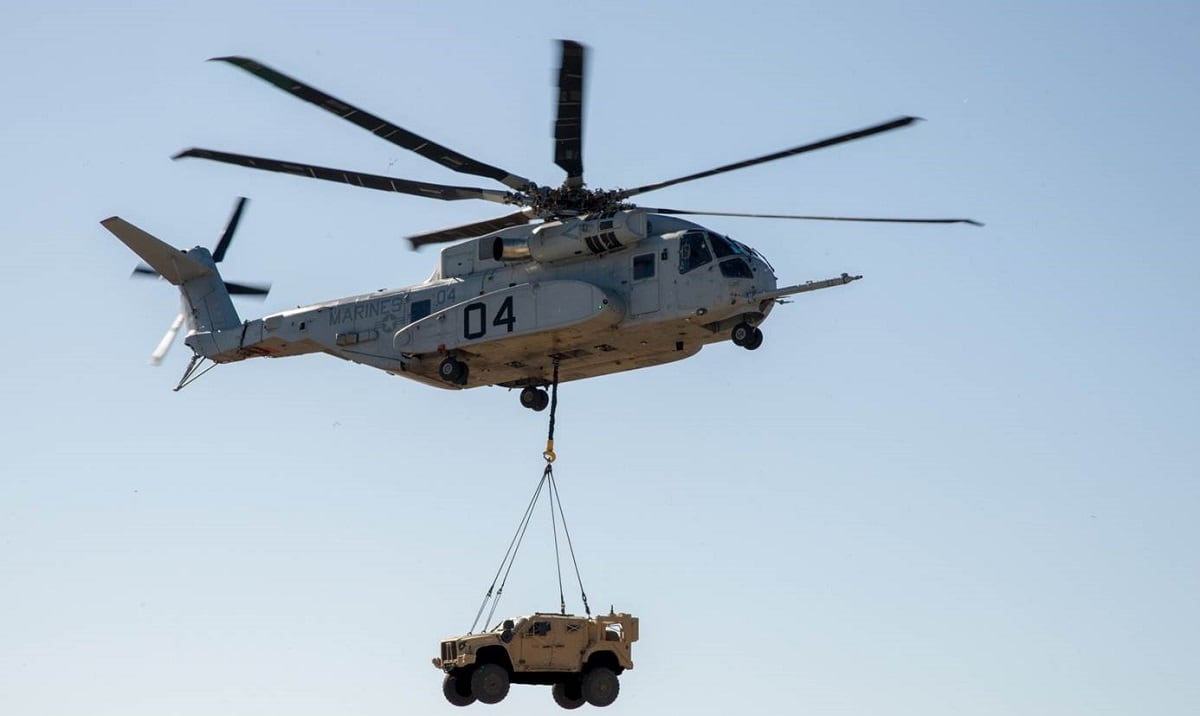The Marine Corps Air Station New River, North Carolina, based Marine Heavy Helicopter Squadron 461 became the Corps’ first CH-53K King Stallion squadron on Monday as the Corps moves forward with its new heavy lift helicopter.
The CH-53K King Stallion, with a maximum external lift of 36,000 pounds and the ability to transport 27,000 pounds 110 nautical miles is a major improvement over the CH-53E Super Stallion the Corps currently employs.
Both helicopters are manufactured by Sikorsky. The extra lift will play a critical role in the Corps’ plan for a future fight that sees Marines widely dispersed across the littorals of the Pacific Ocean.
“Today our Marine Corps got a little stronger,” Maj. Gen. Michael Cederholm, the commanding officer of the 2nd Marine Aircraft Wing, said in a press release.
RELATED

The CH-53K also comes with 63% fewer parts than its predecessor, ideally making it easier to maintain in austere conditions.
Bill Falk, Sikorsky’s director of the CH-53K program, said the helicopter hitting fleet marked another step in the company’s history of working with the Marine Corps.
“While sad to see the beginning of the phase out of the venerable Super Stallion, Sikorsky is thrilled the Marine Corps is introducing the CH-53K King Stallion heavy lift helicopter into the fleet and is moving one step closer to initial operational capability (IOC) and first deployment,” Falk told Marine Corps Times in an emailed statement.
Though the helicopter making it to the fleet is a positive step, the helicopter’s journey was a bumpy one.
The Corps originally ordered the aircraft in 2008 and expected it to hit the fleet in 2019.
But in 2018, after testing one of the first CH-53Ks, the Corps found more than 100 technical problems that caused a multiyear delay in the program.
By September 2020 the helicopter was back on track, with Sikorsky saying it had solved 118 of the aircraft’s 126 technical problems.
But with the delay and fixes the cost of the aircraft ballooned.
The current recurring flyaway cost for the CH-53K is just under $91.6 million per aircraft, Maj. Jay Hernandez, a Marine Corps spokesman, told Marine Corps Times.
For comparison, the F-35′s current recurring flyaway cost is $77.9 million per aircraft.
The goal is to eventually get that cost down to $87 million per aircraft ― the price that the Corps expected to pay in 2017.
But despite the cost, the Corps is happy to finally get its new helicopter to fleet and eventually start putting it to work.
“Quite simply, 2nd MAW will be able to move more troops and equipment, at higher altitudes, faster speeds, and in more austere environments than ever before,” Cederholm said.




